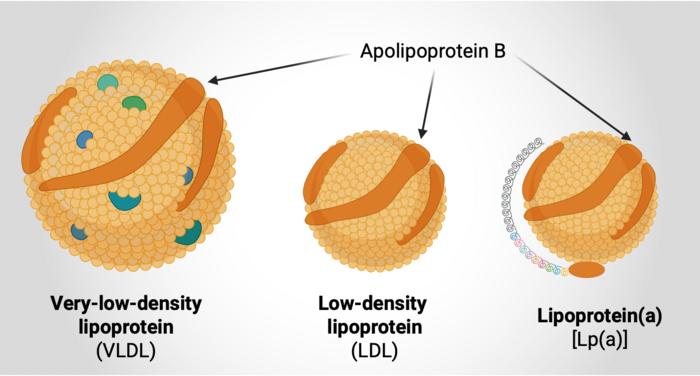In an era where cardiovascular diseases remain the leading cause of mortality across the globe, a significant breakthrough in the realm of heart health monitoring has emerged from a collaboration between Chalmers University of Technology in Sweden and Harvard University in the United States. This comprehensive research introduces a novel approach toward assessing cardiovascular risk by focusing on lipoproteins, casting new light on the multifaceted nature of cholesterol and its carriers. Historically, measuring cholesterol levels in the blood has been the gold standard for predicting heart disease risk, but this study reveals that analyzing lipoprotein markers provides more accurate and actionable insights.
Taking a decisive step forward, the researchers conducted extensive analysis on over 200,000 participants from the UK Biobank, a well-regarded repository of health data. The study’s primary objective was to unearth the relationship between various lipoproteins, specifically those containing apolipoprotein B (apoB), and the risk of heart disease. By employing advanced blood profiling techniques and following participants for up to 15 years, the research team gained invaluable insights into how differing lipoprotein types and sizes play a role in cardiovascular health. This data is pivotal, as it enables healthcare providers to identify at-risk individuals with greater precision.
Cholesterol itself is often categorized into ‘bad’ and ‘good’ types, dependent on its associated lipoproteins. The ‘bad cholesterol,’ recognized for its potential to form lethal plaques within blood vessels, is carried primarily by lipoproteins that feature apoB on their surfaces. In contrast, ‘good cholesterol’ plays a beneficial role by facilitating the return of excess cholesterol to the liver for processing and elimination. An understanding of these contrasting types underscores the need for evaluating not only cholesterol levels but also the specific lipoproteins carrying it.
Interestingly, the researchers noted something profoundly important: the number of lipoprotein carriers is a more critical factor in assessing heart disease risk than the size or type of these carriers. This finding underscores a paradigm shift from traditional cholesterol assessment methodologies, which primarily focus on total cholesterol levels. By measuring apoB levels, healthcare professionals can ascertain the total number of harmful particles in the bloodstream, offering a more comprehensive risk assessment that could potentially save lives.
Moreover, the study identified lipoprotein(a) as another essential component in the cholesterol-related risk equation. Although it represents less than one percent of the total ‘bad cholesterol’ lipoproteins in the general population, elevated levels of lipoprotein(a) have been shown to significantly increase the risk of heart disease in certain individuals, particularly those with a genetic predisposition. Thus, including this marker in regular evaluations could provide a more nuanced understanding of lipid-related cardiovascular disease risk.
As the researchers emphasized, transitioning from traditional cholesterol tests to apoB testing could revolutionize cardiovascular diagnostics. Currently, standard cholesterol tests suffice for many patients; however, in approximately one in twelve cases, these tests fail to catch the underestimation of heart disease risk. By integrating apoB measurements into routine evaluations, the potential for reducing fatal outcomes associated with heart attacks and strokes could be greatly increased, effectively addressing a global health crisis.
The implications of this research extend beyond mere statistics; they hint at a transformative moment in cardiovascular healthcare. The simplicity of obtaining blood samples for these markers—both apoB and lipoprotein(a)—positions them as not only viable alternatives but potentially superior metrics for healthcare practitioners. The existing commercial availability of the tests further facilitates swift implementation, suggesting widespread benefits in early detection and preventative care strategies.
As with any scientific advancement, the path to widespread adoption is laden with challenges, from ensuring awareness among healthcare providers to advocating for insurance coverage of the new testing methodologies. Nonetheless, the research lays a compelling foundation for future studies aimed at expanding the vascular health profile of individuals, thereby enhancing individualized treatment plans and intervention strategies.
In summary, the groundbreaking study led by Chalmers University of Technology and Harvard University marks a pivotal moment in the ongoing battle against cardiovascular disease. By spotlighting the critical role of lipoproteins and their quantification in assessing heart disease risk, the researchers are advocating for a shift in how we approach cholesterol monitoring. As the findings ripple through the medical community, the hope is to cultivate a preventative mindset that emphasizes heart health from early detection to lifestyle modifications.
Emerging from this study is a clarion call for the adoption of innovative testing protocols that could redefine cardiovascular risk assessment. The emphasis on both apoB and lipoprotein(a) offers significant promise in transforming how healthcare systems engage with patients, leading to more effective management of heart disease and ultimately saving lives.
In the wake of this research, it is imperative to foster an environment where such groundbreaking insights not only influence studies but are seamlessly integrated into clinical practice. Addressing cardiovascular health holistically represents an optimistic frontier that not only mitigates risks but empowers individuals with knowledge about their heart health.
Ultimately, this study exemplifies the ethos of scientific inquiry—striving to improve health outcomes through rigorous investigation and collaboration across disciplines. As these findings gain traction, the hope is to see a shift in global cardiovascular health strategies, reinforcing the idea that proactive healthcare is achievable and essential in combatting one of the world’s most pressing health challenges.
Subject of Research:
People
Article Title:
The relative importance of particle count, type, and size of apoB-containing lipoproteins in the development of coronary artery disease
News Publication Date:
28-Apr-2025
Web References:
European Heart Journal DOI
References:
N/A
Image Credits:
Chalmers University of Technology | Jakub Morze
Keywords
cardiovascular disease, cholesterol, lipoprotein, apoB, heart health, blood test, heart disease risk, lipoprotein(a), prevention, healthcare




